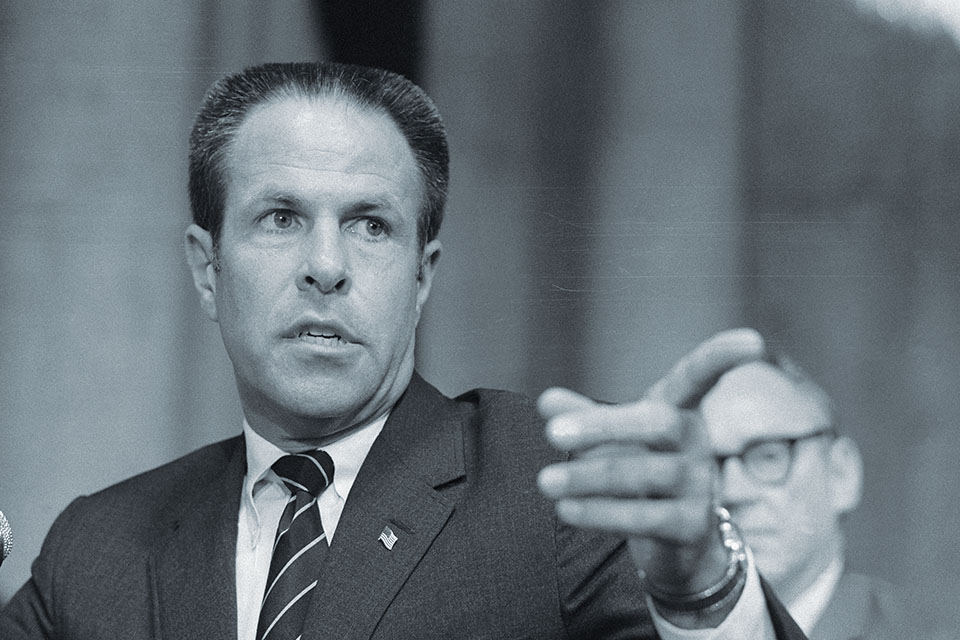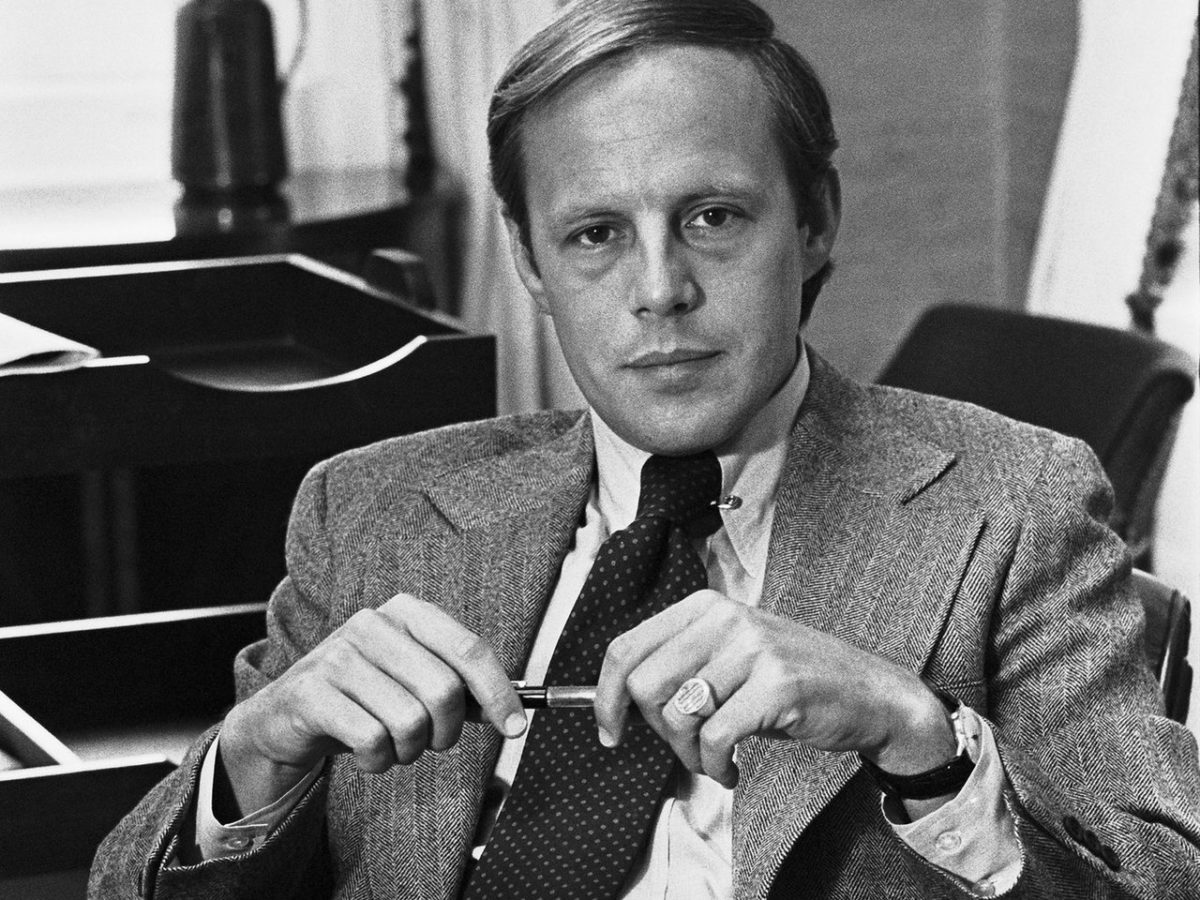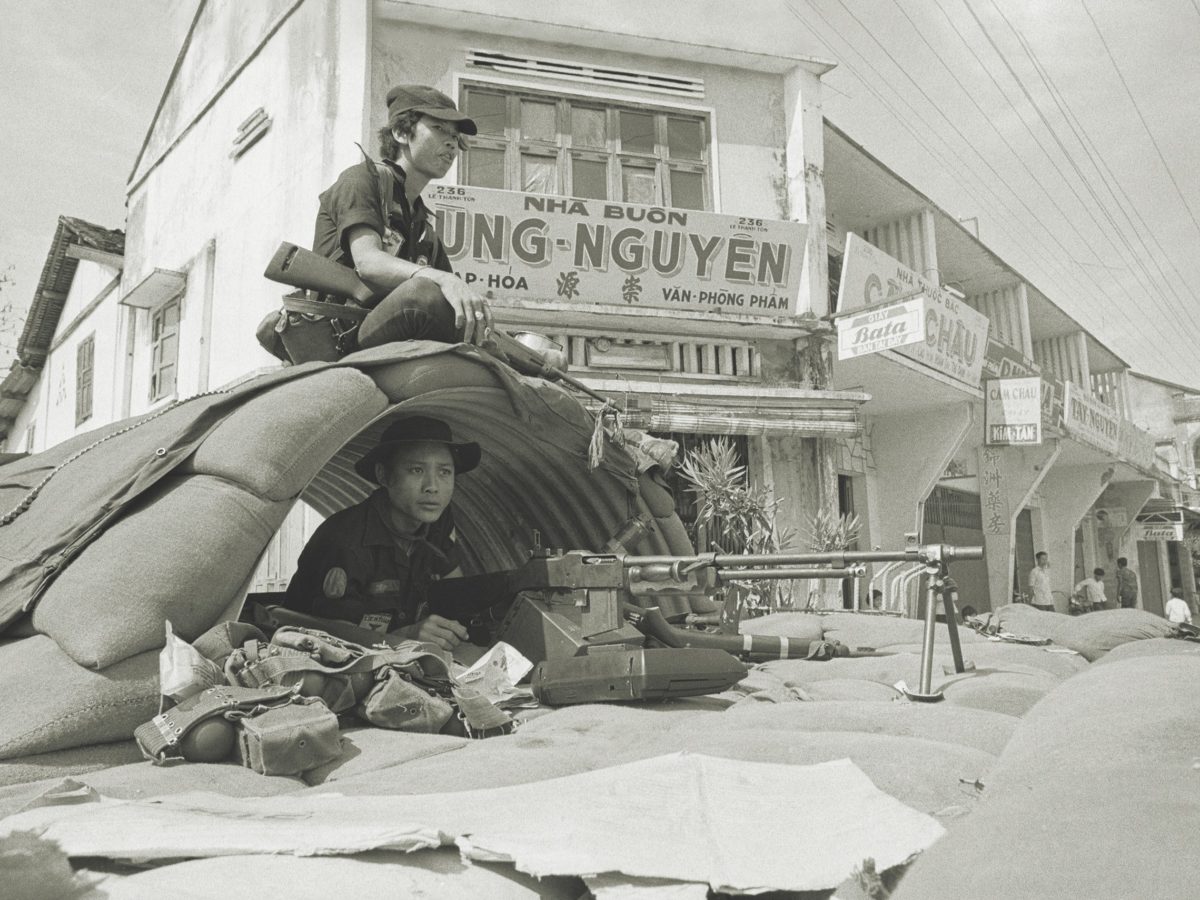On the 39th floor of New York City’s Pierre Hotel, in a suite monitored by closed-circuit cameras and Secret Service agents, Richard M. Nixon looked out over the threadbare landscape of Central Park. It was December 1968, and Nixon was huddled with his closest adviser, H.R. “Bob” Haldeman, a grave young man in a tweed jacket and a brush haircut. The victorious candidate and his chief of staff were scribbling on yellow legal pads, planning the next presidency of the United States, now just a month away.
Having served as Dwight Eisenhower’s vice president, Nixon knew the presidency could be a “splendid misery,” as Jefferson put it, unresponsive even to the commands of the most celebrated general in modern history. “Poor Ike!” predecessor Harry Truman had quipped upon Eisenhower’s election. “He’ll sit here and he’ll say, ‘Do this! Do that!’ And nothing will happen. It won’t be a bit like the Army.”
Richard Nixon was determined to control his fate. His cabinet would be full of strong, idiosyncratic personalities. But the 37th president wanted someone to keep them in line, to ensure that his agenda would be executed, giving him time and space to think. Haldeman would be that person. As his chief of staff recalled years later, referring to himself in the third person: “Eisenhower had told Nixon that every president has to have his own ‘SOB.’ Nixon had looked over everyone in his entourage and decided that Haldeman was a pluperfect SOB. And because of that somewhat unflattering appraisal, my career took a rise.”
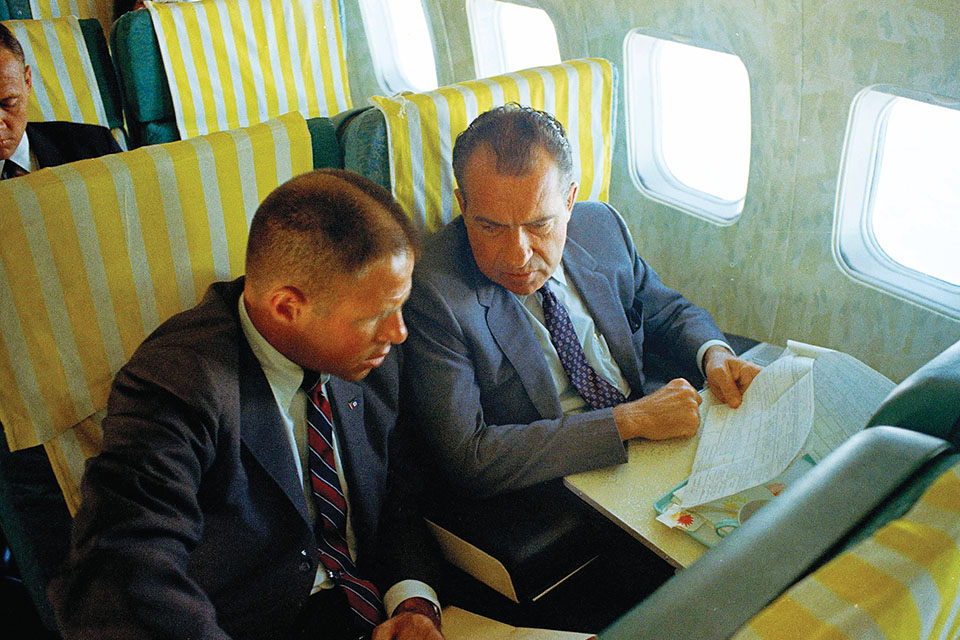
The VOICE OF THE EMPEROR
Of course, Haldeman’s career, and the Nixon presidency, would suffer a spectacular fall that began when the Watergate scandal unfolded, eventually sending the disgraced president into exile and his chief to prison. Newsweek wrote: “Harry Robbins Haldeman is Richard Nixon’s son of a bitch, glowering out at the world under a crew cut that would flatter a drill instructor with a gaze that would freeze Medusa.”
Indeed, Haldeman seemed to personify Nixon’s “imperial presidency.” And yet, in one of the great ironies of presidential history, Haldeman’s successors credit him with creating the template for the modern White House chief of staff—a model that presidents since Nixon have strayed from at their peril. “There was a conventional wisdom that Watergate occurred because [of] the White House chief of staff system under Haldeman,” says Dick Cheney, who at 34 became Gerald Ford’s gatekeeper. “That wasn’t true. The truth is, sooner or later nearly every president, no matter what he thinks when he arrives, ends up following the Haldeman system.”
Harry Robbins Haldeman and Richard Milhous Nixon made for an odd couple, worlds apart socially. H.R. “Bob” Haldeman, an advertising agency executive in Los Angeles, was an unlikely candidate for presidential consigliere. “Bob Haldeman would have been a superstar had he never gone to the White House,” recalls Larry Higby, who at 23 followed Haldeman from J. Walter Thompson to the White House. Indeed, Haldeman in the early 1960s was Southern California royalty: regent of the University of California; president of the UCLA alumni association; founding chairman of the California Institute of the Arts. But Haldeman had found his calling as an advance man in Nixon’s 1960 presidential campaign; he would later manage Nixon’s successful run for the White House in 1968.
GET HISTORY’S GREATEST TALES—RIGHT IN YOUR INBOX
Subscribe to our HistoryNet Now! newsletter for the best of the past, delivered every Monday and Thursday.
Nixon’s ‘berlin wall’
Holed up in Nixon’s transition headquarters at the Pierre, Haldeman devised what he called a staff system, to be followed as a model of White House governance.
On December 19, 1968, he summoned members of the nascent administration to a meeting. Watching from the back of the room, speechwriter William Safire took notes as the president-elect’s newly anointed chief addressed the troops:
“Our job is not to do the work of government, but to get the work out to where it belongs—out to the Departments,” Haldeman explained to subordinates. “Nothing goes to the president that is not completely staffed out first, for accuracy and form, for lateral coordination, checked for related material, reviewed by competent staff concerned with that area—and all that is essential for Presidential attention.”
Haldeman warned about what he called end-running—when someone with his own agenda meets privately with the president without going through the chief of staff, all too often resulting in an ill-considered presidential edict with unintended consequences: “That is the principal occupation of 98 percent of the people in the bureaucracy. Do not permit anyone to end-run you or any of the rest of us. Don’t become a source of end-running yourself, or we’ll miss you at the White House.”
No nuance of statecraft or image making escaped Haldeman’s attention. Nothing was exempt from his “zero defect” policy, recalls Terry O’Donnell, a White House veteran who became a Nixon aide in 1972. “He expected perfection. He said, ‘This White House is the president’s house and it should be the best in the world,’” O’Donnell said. “So if he walked through the West Wing and saw a paper askance, he’d make note of it. And if he went, literally, into the john at Camp David—because this really happened—and the toilet paper roll was almost run down, he made a note of it and said, ‘Terry, that’s not as it should be. Fix it.’”
With their Germanic names, Haldeman and Nixon’s chief domestic adviser, John Ehrlichman, were christened by the media “the Berlin Wall.” The narrative took hold of Haldeman as the leader of a Praetorian Guard that isolated the president, building a wall between Nixon and his cabinet. Yet that narrative was not true. “It was just the opposite,” says Higby. “Contrary to what people think, Haldeman worked to get more people in to see the president.” It was Nixon who demanded isolation, preferring memos to meetings, retreating to his private hideaway in the Old Executive Office Building. Nixon was “pathologically shy,” according to Stephen Bull, at the time a young presidential assistant. Haldeman knew that Nixon functioned best when given privacy and latitude to make decisions. “The most important thing the president has is time,” says Bull. “And the chief’s job is to preserve as much of it for him as he can.”
AN EFFECTIVE TEAM — and buffer for Nixon’s paranoia
With Haldeman cracking the whip, Nixon forged bipartisan success in domestic and foreign affairs. The president was ideologically closer to his Democratic opposition than many supposed. Welfare reform—or “workfare”—was conceived by Democrat Daniel P. Moynihan, a special assistant to Nixon. And, as Nixon biographer Evan Thomas points out, “Nixon began the march, and his administration was an active player in other traditionally liberal realms like health care, consumer and job safety, and the environment. He embraced the mid-20th-century ethos that government existed to solve problems, and he kept at them until he was swallowed by Watergate.”
Among Nixon’s major domestic achievements, denounced by the Republican Party ever since, was the establishment of the Environmental Protection Agency.
In Nixon’s mind, enemies had infiltrated government top to bottom; he was determined to root them out. Yet Haldeman often acted as a brake on presidential orders the staff chief considered unwise or even illegal. “Presidents are like everybody else,” explains Higby. “They have moments of pique—moments when they’re really furious or really upset. Not only would Haldeman talk Nixon out of crazy ideas, but they had an understanding that the stuff he [Haldeman] felt was really bad and really wrong, he wouldn’t do.” Better to let the president cool off, and return another day. “Now, he would always go back to the president, a day or two later, and say, ‘I didn’t do that,’” says Higby. “‘Remember you wanted me to do that? I didn’t do that. Here’s why.’”
Recommended for you
A Conversation with an angry president
The White House tapes capture countless instances of Nixon doing a slow burn as Haldeman tries to tamp down the president’s anger. In the summer of 1971, Nixon was convinced that classified documents had been spirited out of the State Department and locked up at the Brookings Institution, a liberal think tank. He demanded action.
NIXON: …I want Brookings, I want them just to break in and take it out. Do you understand?
NIXON: That’s what I’m talking about. Don’t discuss it here… I want the break-in. Hell, they do that. You’re to break into the place, rifle the files, and bring ’em out.
HALDEMAN: I don’t have any problem with breaking in. It’s a Defense Department–approved security…
NIXON: Just go in and take it. Go in around 8:00 or 9:00 o’clock.
HALDEMAN: Make an inspection of the safe.
NIXON: That’s right. You go in to inspect the safe. I mean, clean it up.
In a subsequent meeting, the commander-in-chief offers a dark rationale for law-breaking.
NIXON: Do you think, for Christ’s sakes, that The New York Times is worried about all the legal niceties? Those sons of bitches are killing me… We’re up against an enemy, a conspiracy. They’re using any means. We are going to use any means. Is that clear?
Haldeman managed to shelve the break-in plan, but before long the harebrained plot would come to life again.
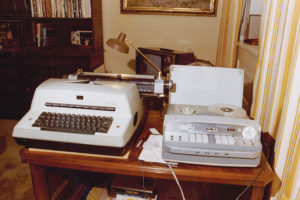
VIETNAM AND NIXON’S END
Nixon’s fate turned on ending the Vietnam War; his inability to do so triggered a pattern of destructive behavior that would end his presidency. More than 57,000 Americans, along with hundreds of thousands of Vietnamese, including civilians, had been killed. Nixon and his inner circle blamed domestic opposition; agitators who were pawns of Moscow; traitors who were leaking national security secrets. The White House was literally surrounded by antiwar protesters.
Besieged, Nixon and his chief would unwittingly give their enemies the keys to the fortress. In February 1971, Nixon had posed to Haldeman a seemingly mundane question: How could they preserve the president’s conversations for posterity? Haldeman suggested installing a manual recorder, which the president could turn on and off, taping selectively. But Nixon was incapable of operating even the simplest mechanical device. “So eventually Haldeman said, ‘Well, the only other thing you can do is do a voice-activated system,’” Higby recalled. “And that is when we put in the system that later became the tapes.” As one Nixon staffer would later note ruefully, “For want of a toggle switch, the presidency was lost.”
On June 13, 1971, The New York Times began publishing the Pentagon Papers, a secret history of the U.S. in Vietnam from 1945 to 1967, drawn from classified documents. The sensational leak, by a former Pentagon aide named Daniel Ellsberg, enraged Nixon. His determination to “get” Ellsberg set in motion what Attorney General John Mitchell called
the “White House horrors”—the ill-conceived intelligence operations that would doom his presidency. For Nixon’s chief of staff, managing this crisis would be the ultimate test. H.R. Haldeman would fail that test spectacularly.
THE TAPES
With the tapes silently rolling, Nixon demanded dirt on his enemies, and on Ellsberg in particular, setting into motion a chain of events that would spiral out of Haldeman’s control. The chief had become adept at ignoring orders that were beyond the pale. But other Nixon confidants were less squeamish. Charles Colson, a ruthless political hatchet man and Nixon favorite, became the president’s go-to person for dubious if not flagrantly illegal commands. Colson came and went from the Oval Office, meeting privately with Nixon. And it wasn’t just Colson; Ehrlichman had set up an under-the-radar intelligence unit within the White House itself. “The Plumbers,” as they were known, were born of Nixon’s frustration with his own FBI. Nixon was convinced that J. Edgar Hoover was refusing to do for him what he had done for other presidents: off-the-shelf—that is, illegal—political espionage.
The origin of the illegal break-in at the Democratic National Committee on June 17, 1972, remains a mystery, debated for 40 years. There is still no evidence that Haldeman or Nixon specifically approved the plot. But one thing is clear: With winks and nods and looks-the-other-way, the White House gave the green light to an intelligence apparatus that had become a criminal enterprise.
How could the break-in and the other White House “horrors” have happened on Haldeman’s watch? “This is the big mystery about Haldeman,” says biographer Thomas. “Most people seem to think he was the best chief of staff ever in many ways. The paperwork was good, the quality of the paper was good, the chain of command. And Haldeman enforced that. So he runs this incredibly tight ship. But he just misses the danger of Watergate.” For Terry O’Donnell, who worked closely with him, the idea of Haldeman approving tawdry second-story jobs makes no sense: “He had a very keen sense of where the line politically and otherwise was about what you can do. I don’t think he ever would have bought into any of the illegal activities—and he would have driven a spike into the Watergate break-in, the stupidest damn thing.”
WATERGATE
Saturday, June 17, 1972, was a beautiful day at the presidential compound in San Clemente, California. Working by the pool, Higby and Haldeman looked up to see press secretary Ron Ziegler hurrying toward them. Ziegler brought a strange news clipping: Five men, wearing rubber surgical gloves, had been arrested while trying to plant electronic surveillance devices at the Democratic National Committee headquarters at the Watergate. “The news item was jarring, almost comical to me,” Haldeman writes in his memoir. “My immediate reaction was to smile. Wiretap the Democratic Committee? For what? The idea was ludicrous.” But Haldeman’s claim that he was surprised is as dubious as Captain Renault in Casablanca voicing shock that there was gambling going on at Rick’s cafe. More persuasive is Haldeman’s next entry: “Not that I was all that horrified of wiretapping or bugging in general. Ever since a conversation with J. Edgar Hoover at New York’s Pierre Hotel in 1968, which revealed the extent of the political wiretapping by President Lyndon B. Johnson, I had felt no instinctive aversion to such bugging by Republicans.”
Within days, Nixon and his chief of staff were neck-deep in the cover-up: They discussed everything from paying hush money to the burglars to ordering the CIA to stop the FBI from pursuing its investigation. As Thomas observes: “Haldeman says, ‘Well, gee, I didn’t think of it as obstruction of justice; I thought of it as containment.’ But, boy, his radar sure is failing him.” Dean points out that Haldeman “withholds a lot of information from Nixon… He uses a kind of code language and code signals in those early conversations—alerting him to the fact that there are some problems. It was just too ugly to face so that’s why it went forward.”
TAKING ONE FOR THE BOSS
By spring 1973, as congressional investigators and prosecutors were closing in, pressure was growing for Nixon to save himself by firing Haldeman and Ehrlichman. On the evening of April 30, in a televised address from the Oval Office, Nixon announced the resignations of “two of the finest public servants it has been my privilege to know.”
Yet Haldeman wasn’t finished doing Nixon’s bidding. When the existence of the White House taping system came to light, Nixon’s ex-chief continued to give him advice. “Haldeman said that the tapes were still our best defense,” Nixon wrote in a memoir. “He recommended that they not be destroyed.”
Indeed, Haldeman believed the recordings somehow would exonerate them. “Haldeman said to me, on a number of occasions, I think the tapes will really be the thing that at the end saves the president,” says Higby.
The truth was just the opposite. The discovery of the tapes—hard evidence of the president’s immersion in the cover-up—meant the Nixon presidency was finished.
FROM presidential majordomo to prison
As their defenses collapsed, Nixon and his chief of staff behaved less like seasoned Machiavellians than befuddled amateurs. Haldeman would defend Richard Nixon to the end. Before the Senate Watergate Committee, the president’s ever-dutiful chief insisted that Nixon had no knowledge of the cover-up and never authorized giving hush money to the burglars. For those untruths, H.R. Haldeman would be convicted of perjury, conspiracy, and obstruction of justice and sent to prison at the federal minimum security facility in Lompoc, California, where he served a sentence of 18 months.
“Son of Nixonstein” read a cartoon showing the fallen chief as a monster. To the press, and to most Americans, Haldeman seemed proof that too much power invested in a White House staff chief leads to calamity. But that’s not the way Haldeman’s successors saw him. In January 1986, Nixon’s ill-starred chief would emerge publicly again. The occasion was a symposium in San Diego, that brought together former White House senior aides and chiefs of staff: Dwight Eisenhower’s Andrew Goodpaster; John Kennedy’s Theodore Sorensen; Lyndon Johnson’s Harry McPherson; and three chiefs who followed Haldeman—Gerald Ford’s Donald Rumsfeld and Dick Cheney, and Jimmy Carter’s Jack Watson.
Haldeman struck these savvy White House veterans as serene, charming, and in total command of his subject. Cheney was bowled over by his predecessor’s mastery of the nuances implicit in the chief’s job. “After about two days together, it was clear Haldeman knew more about it than anybody else,” Cheney says.
At the conference, Nixon’s ex-chief was asked how the Watergate scandal had come about.
“The thing that went wrong is that the system was not followed,” Haldeman said. “Had we dealt with [Watergate] in the way we set up from the outset…we would have resolved that matter satisfactorily, probably unfortunately for some people, but that was necessary and should have been done. It wasn’t done, and that was what led to the ultimate crisis.”
Facing the ultimate crisis, Haldeman failed to execute his own model of White House governance. “Haldeman is at the center of it,” says Evan Thomas. “Because he’s the guy in the room who should have been able to go, ‘STOP! STOP!’”
“If I had it to do over, I would do so differently,” Haldeman said. “I would take the bad guy in Nixon on frontally, at least some of the time.”
historynet magazines
Our 9 best-selling history titles feature in-depth storytelling and iconic imagery to engage and inform on the people, the wars, and the events that shaped America and the world.


